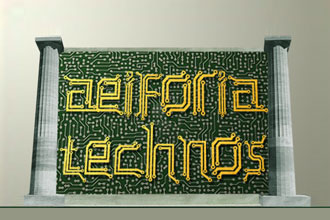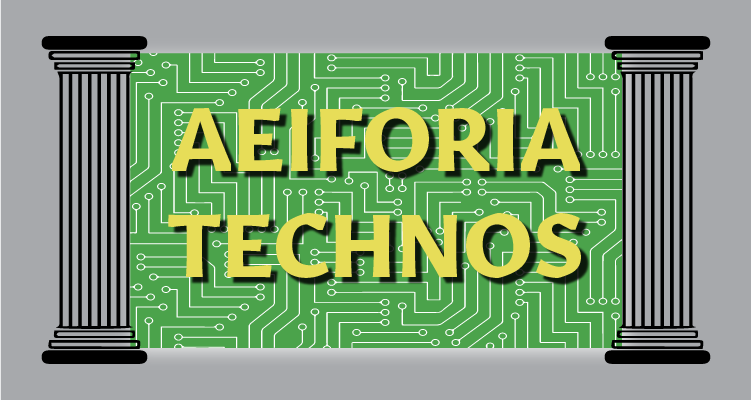“Glowing” Footprints
 Do your ICT products have good chemistry? Do you even have any idea what chemicals may be in your products and how it may affect the environment you install them into? Do you know if the manufacturer you purchased or specified are being environmentally responsible when it comes to chemicals in the manufacturing process? Chemical footprinting is on the rise globally for manufactured goods and is reaching mainstream proportions alongside greenhouse gas emission and energy use to gauge the financial and health implications of products as the implications of chemical mismanagement are becoming better known and understood.
Do your ICT products have good chemistry? Do you even have any idea what chemicals may be in your products and how it may affect the environment you install them into? Do you know if the manufacturer you purchased or specified are being environmentally responsible when it comes to chemicals in the manufacturing process? Chemical footprinting is on the rise globally for manufactured goods and is reaching mainstream proportions alongside greenhouse gas emission and energy use to gauge the financial and health implications of products as the implications of chemical mismanagement are becoming better known and understood.
By now most people in the ICT industry who manufacture, specify and install ICT equipment into either residential or commercial space are familiar with RoHS (Restriction of Hazardous Substances) compliance through the European Union Directive 2002/95/EC restricting specific hazardous substances and materials found in electrical and electronic equipment. This directive originally removed six known hazardous materials in 2002 from the electronics and electrical industry known to cause health and environmental problems. Another four materials were added in recently in 2015 and mandated to carry a RoHS compliant sticker on every consumer electronics product sold throughout Europe in 2011. Additionally, the Electronic Equipment WEEE Directive 2002/96/EC mandated treatment, recovery, and recycling of electronic and electric equipment throughout Europe. So this makes everything OK, right? Not quite.
RoHS and WEEE show up in most major markets simply as a matter of economics and efficiency. If a product meets the strictest standards then it should carry through to other markets and may even provide a selling point into those markets as a benefit where restrictions and regulations are not so tight. This is like the car industry in the U.S. that bend to the California environmental automobile restrictions including allowable tailpipe emissions and miles per gallon minimums being the toughest in the United States. Detroit and other manufacturers certainly don’t want to lose out of a market worth one-sixth of the U.S. economy and rather than have to retool a factory based on where a car might ship to sell it is more cost effective to just comply with the tougher standards and sell it everywhere.
We have all pretty much gotten accustomed to this — except one problem. Our environmental needs have changed and simply staying the status quo won’t cut it. With climate change being on the 24-hour news cycle almost every day and politicians sparring over what is “fake news” and actual real honest-to-goodness science, companies are quietly moving towards a holistic approach to sustainability goals. The Paris Climate Agreement really brought this to the forefront of the general population’s table-talk especially with the controversial move of the current US administration declaring a pull out and seemingly trying to reverse every environmental policy put in place over the last 45 years all to score political points.
Fortunately, market leaders and lower level politicians alike have stepped up to continue to improve the environment despite the headlines. With good reason – voters and shareholders are increasingly demanding it. Introducing the Chemical Footprint Project (CFP). This project joins investors, government and non-government agencies and organizations, the healthcare industry, manufacturers, and others working together to support the global Sustainable development Goals initiative. This initiative highlights the significance of the reduction and management of chemicals in the manufacturing process, supply chain, and the products themselves.
This is no small shakes either with over $2.3 trillion in assets held by the investors and $600 Billion in purchasing power from product purchasers, Wal-Mart being the newest (and biggest) kid on the block to be involved. This consortium is making their data publicly available for benchmarking and analysis allowing others the opportunity to improve and hold their supply chains accountable.
Data points include:
- The policies and management strategies for effective chemical management
- A complete inventory of chemicals used in the entire life-cycle of the product from raw materials through end point to the end-user
- Tracking of chemical footprints and progress related to safer alternatives
- Sharing of information and posting of scorecards for the investors, shareholders and public to review
This process extends beyond the ICT world and is inclusive of small national brands to large multi-nationals in industries such as toys, apparel, building products, medical devices, packaging and many others (including ICT). The upshot to this is different industries can learn from each other in strategy, implementation and calculation of metrics.
For instance, 40 percent of the 2016 respondents identified Chemicals of High Concern (CoHC) by quantity while others used mass of chemicals as a metric. For instance, manufacturers that make formulary liquid-based products such as cleaners can use mass as a metric where as those who make tangible goods can use the numerical counting methods. Sharing these methods allow different product categories to consistently be defined and the data shared without marketing slant. This new metric of Quantitative Chemical Footprinting is helping companies meet their goals in sustainability reporting to shareholders and customers. Small companies can learn from larger companies, better ways to manage as they scale up and large companies can in turn learn from nimbler smaller company’s ways to be more cost effective in the reduction of chemical management.
We saw this happen with the rollout of RoHS and WEEE in the EU which puts the ICT industry in a positive position for incorporating additional chemical control strategies. As specifiers, installers, and ultimately, end users this information allows for a better understanding of what is going into a space and how it impacts the environment in a (hopefully) positive way.





